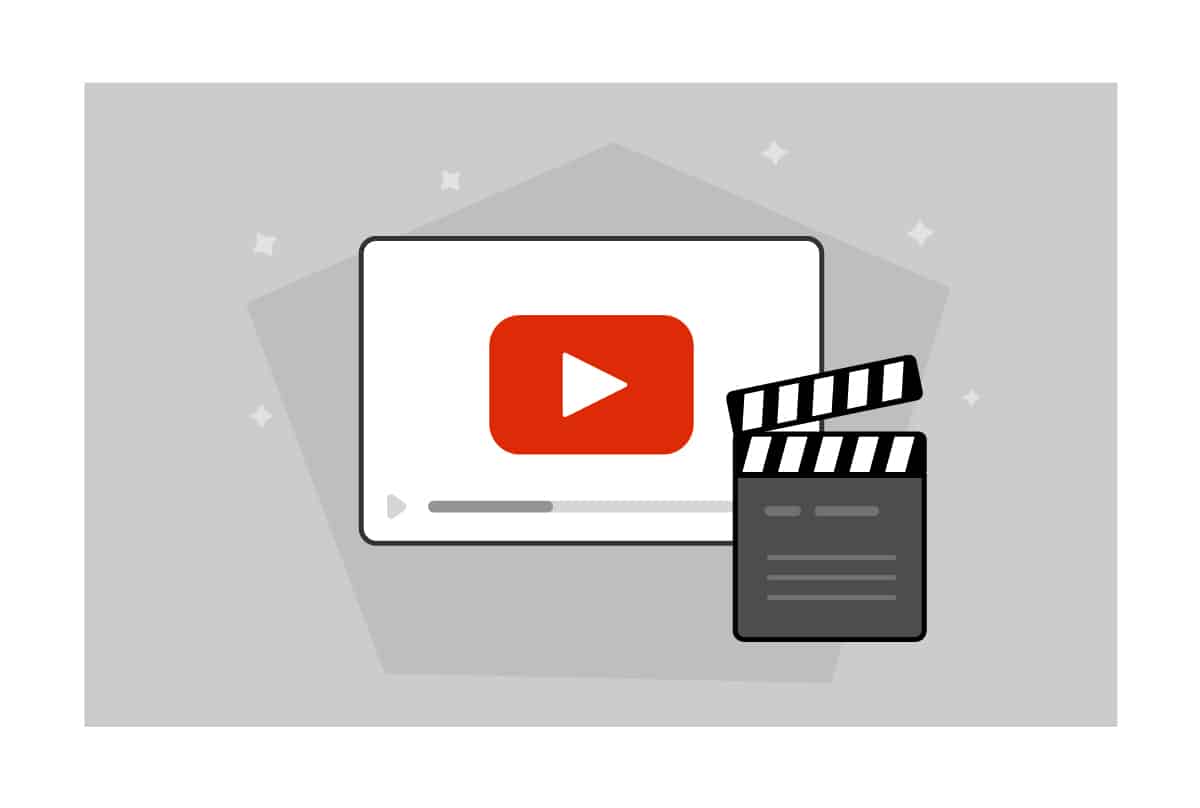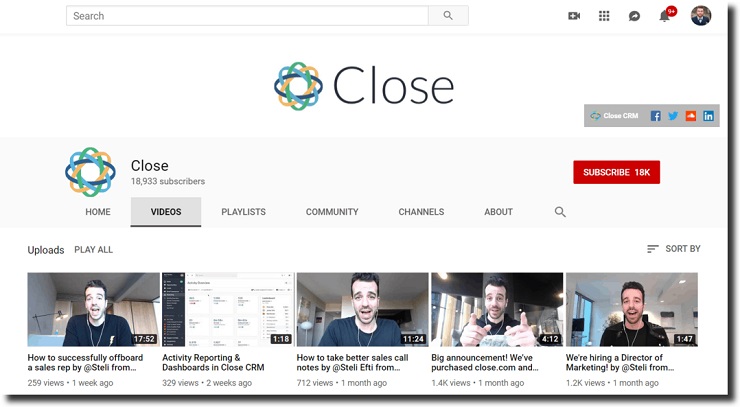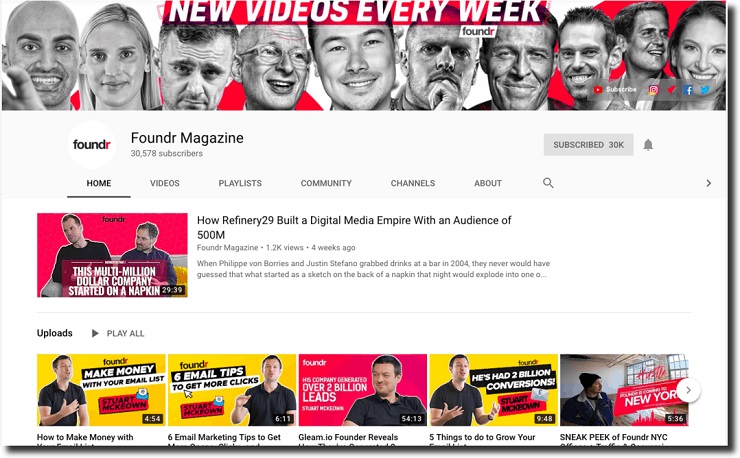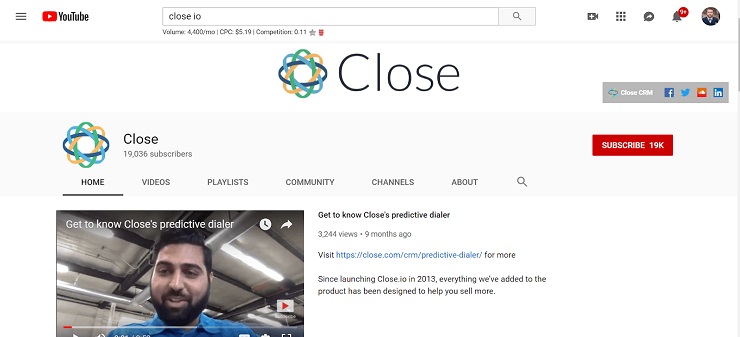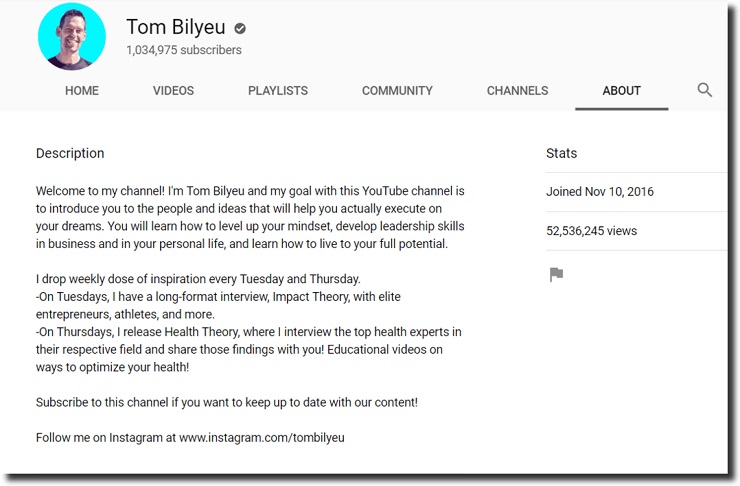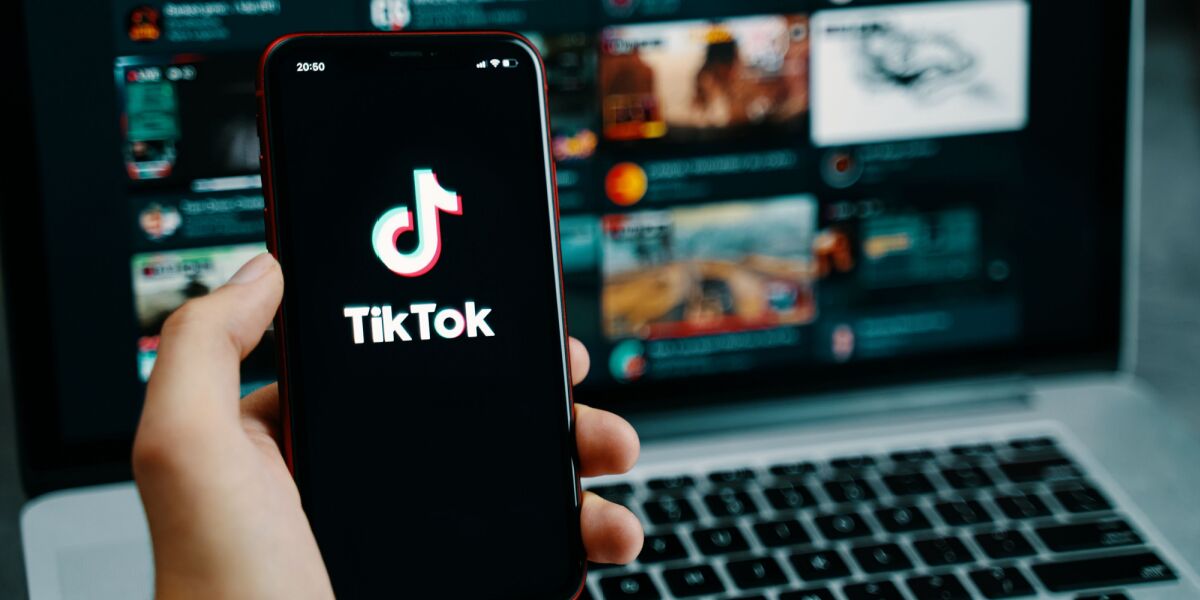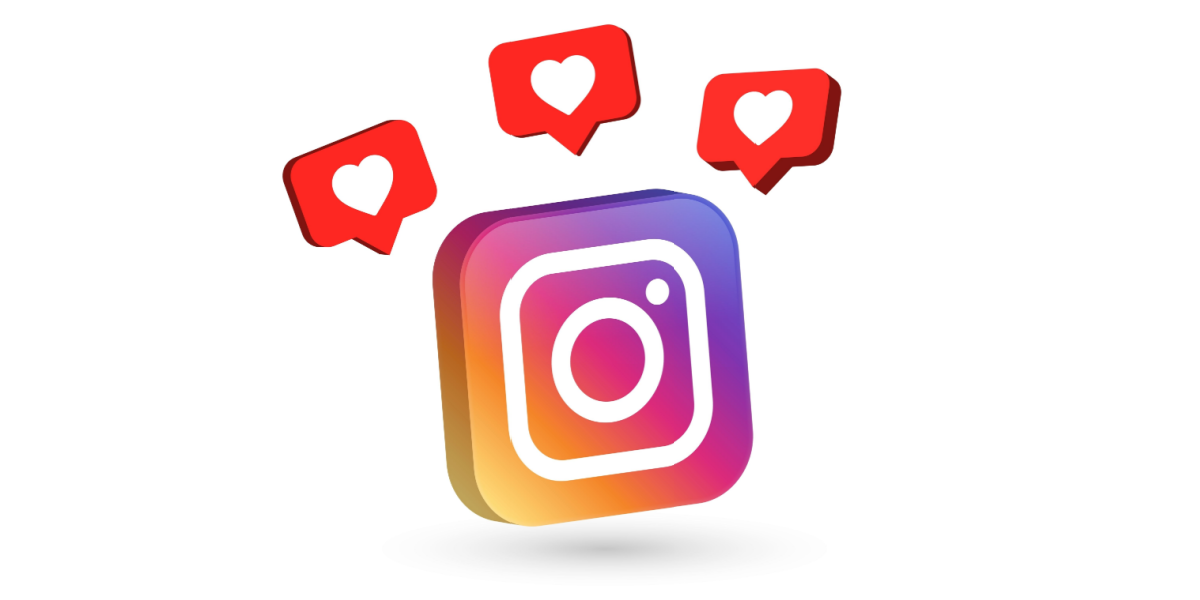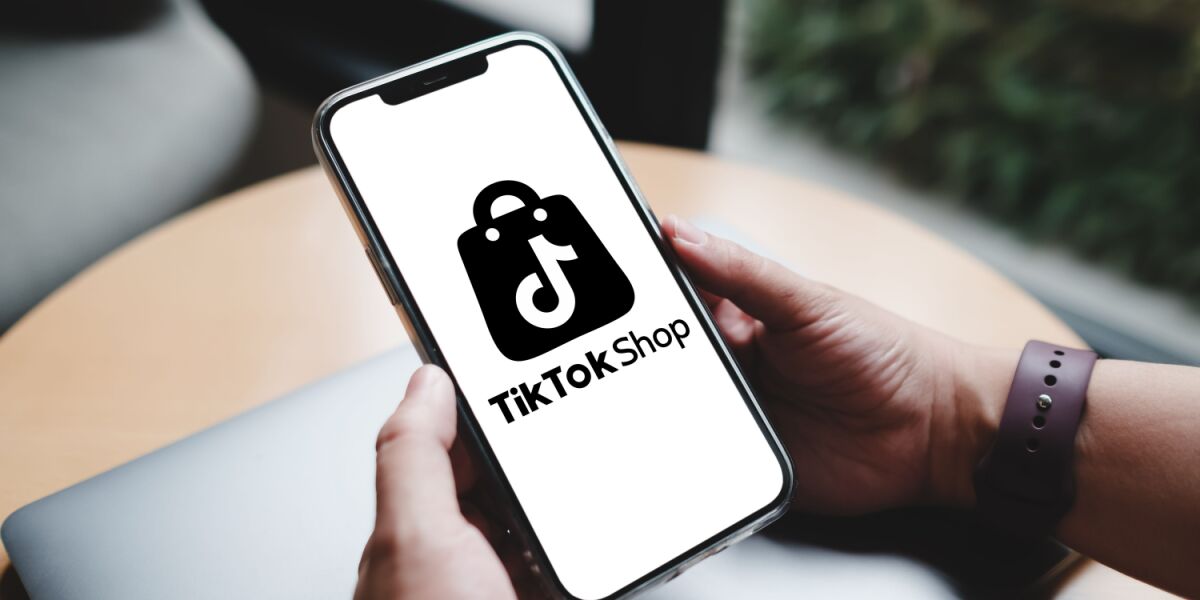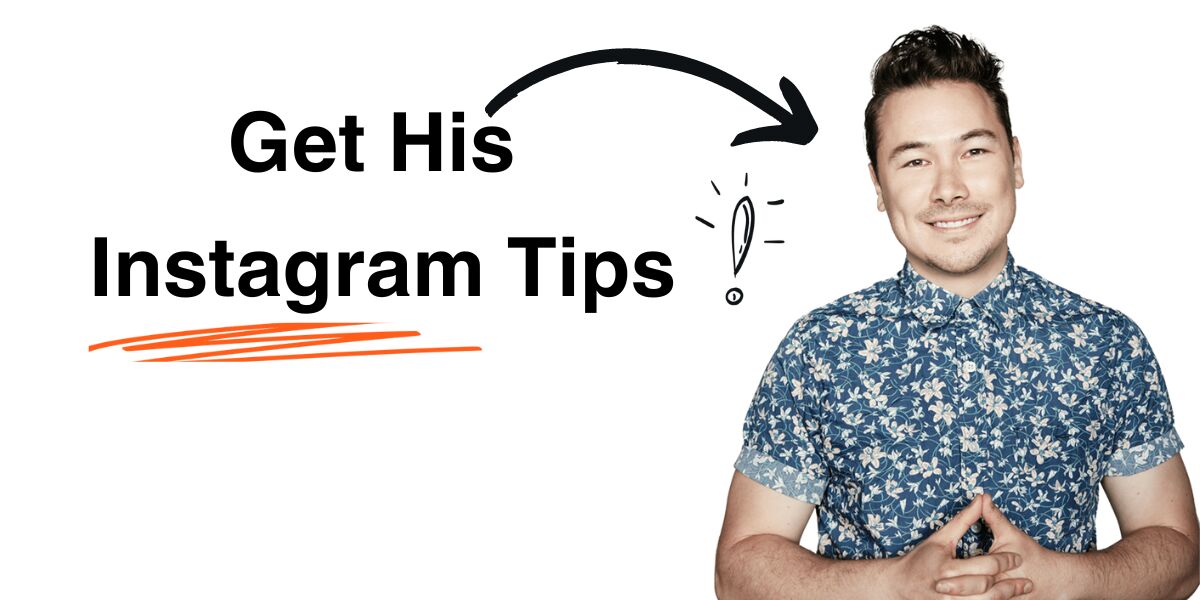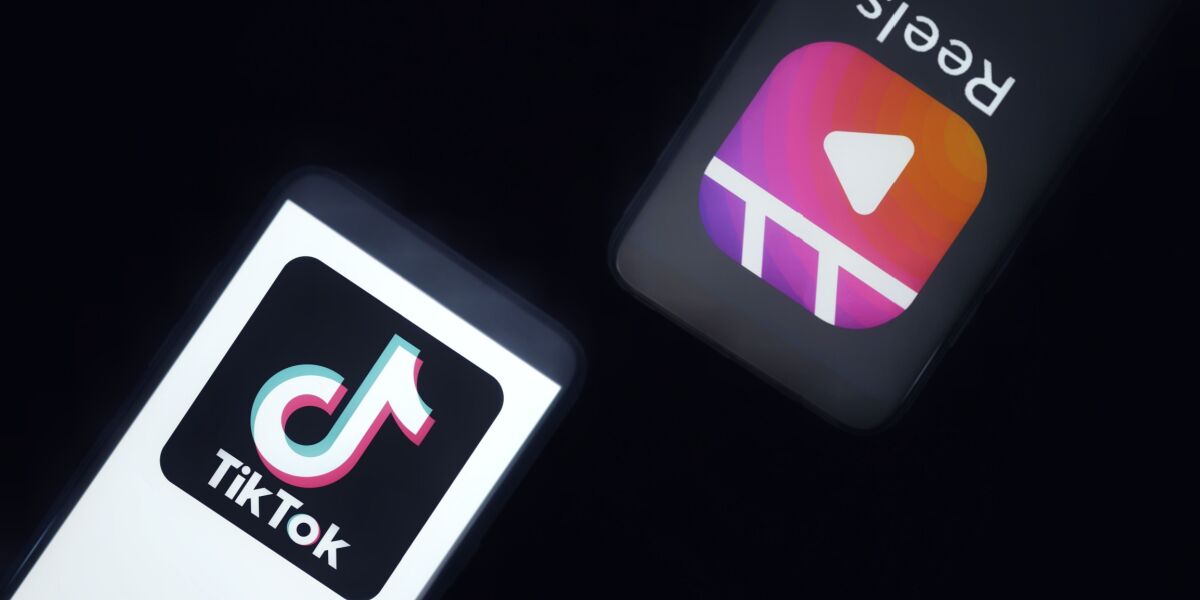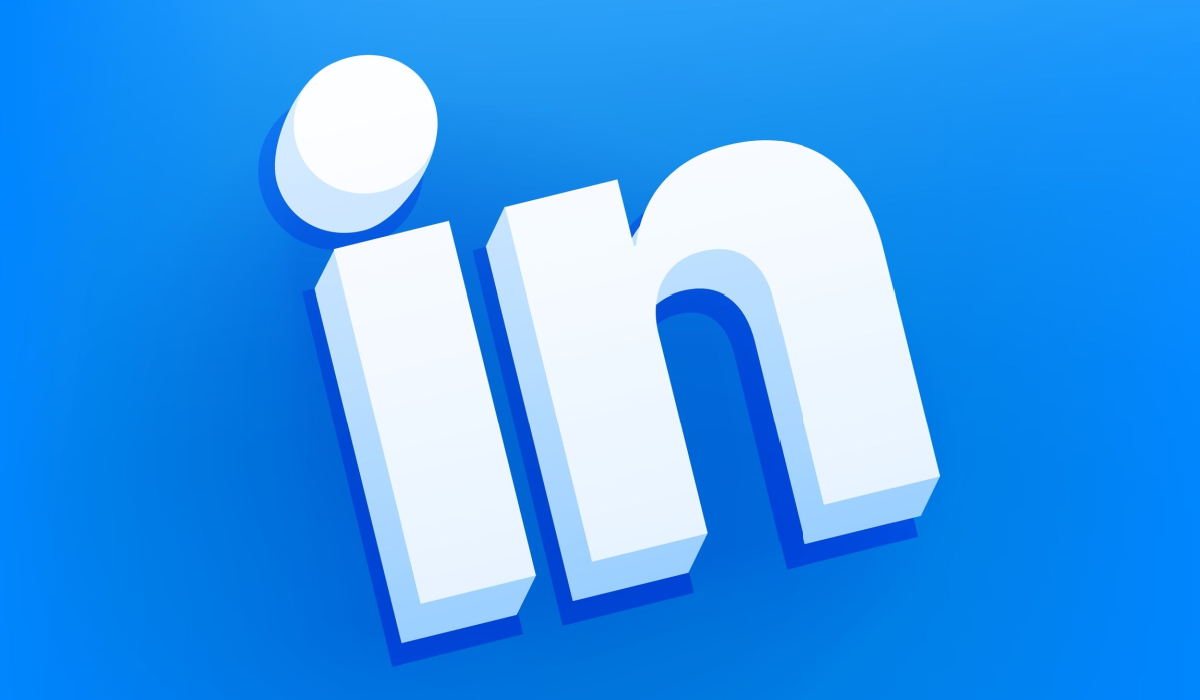YouTube may seem overwhelming, but there’s actually a lot less legitimate competition than on other platforms, and therefore, far more opportunity to gain traction and connect with your audience and potential customers.
That’s because starting a YouTube account isn’t as easy as setting up a Facebook or LinkedIn, and most people who do sign up won’t take the time to create regular, high-quality videos for their audience.
In other words, there is a lot of junk that you can rise above with the right approach and dedication.
Of course, launching a successful YouTube channel is by no means easy. But with the right tools, time investment, and focus, YouTube can open incredible doors for your business. Foundr’s experiencing this first hand, right now, since we started significantly investing in YouTube content this year.
To understand how to start a YouTube channel for your business, you must first understand why YouTube is such a powerful medium. In my opinion, it all comes down to three unique characteristics. YouTube simultaneously works as a:
- Free media publishing channel
- Video search engine
- Popular social network
Why does that matter? We’ll investigate that below. For now, just know that YouTube can be a powerful tool for growing awareness around your brand, attracting customers, and becoming an industry thought leader.
Whether you’re asking, “Should my business start a YouTube channel,” or you just want more information on how to get started, in this article I’ll explain how to make a YouTube channel and delve into the benefits of content marketing through YouTube. To get us there, I’ve called in an expert—veteran YouTube marketer Steli Efti.
EXCLUSIVE FREE TRAINING: Successful Founders Teach You How to Start and Grow an Online Business
Creating a YouTube Channel: Advice from a 5-Year Pro
Steli Efti is the CEO & co-founder of Close. He began creating YouTube videos as a content marketing strategy more than five years ago. His videos explore business topics—often about cold outreach, his speciality—for his nearly 20,000 subscribers. He also posts about product announcements, job openings, and waves they’re making in the industry.
Close has used YouTube to establish itself as a thought leader and make its brand more recognizable. Steli agreed to answer some questions to help us understand some of the best practices of building a popular channel. For starters, he says he chose YouTube because it played toward one of his key strengths: public speaking.
Speaking was always the medium that felt more natural for me than writing, and video allowed me to just speak in front of a webcam and have a piece of content.
We chose YouTube over other video platforms because even back then, it was by far the dominant video platform and we could already see that the audience that comes with YouTube would be beneficial.
The vast majority of YouTube views we get are actually from YouTube itself: Suggested videos, YouTube search, YouTube’s home screen.
YouTube: A 3-Tier Distribution Channel
The beauty of Youtube is that it gives you some really easy and competitive distribution opportunities. As a platform owned by Google (Alphabet), YouTube is not only the most recognized name in online video, but it’s also powered by the largest search engine in the world. So it’s got a lot going for it.
1. YouTube as a Free Media Publishing Channel
For most of the history of video, distribution has always been television or movie theaters. The types of content being produced were therefore highly exclusive and limited because only a handful of channels distributed.
Today, every individual website, YouTube channel, Vimeo, and more is it’s own distribution and video publishing platform. People have more media vying for their attention than ever before, so it can be competitive, but there is also a lower barrier of entry for creating your own content.
Think about the last time you wrote something on Facebook and then tried to share that content to LinkedIn. At best, you can link to the post or copy and paste the same words. You essentially have to upload from scratch or just post a link (that no one is going to click on).
YouTube is different. When you share it across social networks, the video can play right there or on YouTube itself. It embeds into LinkedIn, Twitter, Facebook, etc. People can watch it on their social feeds without ever leaving the page. This makes it easy to share and interact with the content.
2. YouTube as a Video Search Engine
Google is search. Nine out of 10 people use Google for everyday internet search queries. This results in a lot of metrics and presumably, powerful intent-matching when people type their query into the search bar.
If you understand the basics of keyword research and have a clear idea of what your target audience searches for regularly, YouTube offers an awesome opportunity for organic traffic.
3. YouTube as a Social Network
YouTube also dabbles in features we all associate with social networking. Between subscribers, channels, likes and comments, YouTubers can amass audiences and build a social aspect to their brand.
By encouraging followers to subscribe to your channel, you can essentially have a free ad on the front of YouTube every time that user goes to the site on their phone or computer.
Every time you upload a new video, it might appear on that viewer’s home page. If that isn’t great advertising, I don’t know what is. It drives home the value of having compelling titles for videos and a professional cover image.
The Basics: What Do You Need to Get Started on YouTube?
OK, OK, YouTube is great. But what do you need to start creating quality content that people want to watch?
It actually doesn’t take a lot of fancy recording equipment or expensive editing software. Honestly, all you need is a phone and some decent lighting.
When you visit Steli’s channel, you immediately notice that almost all his videos are recorded using a simple pair of headphones and either his computer or phone camera, for example.
If you have some extra cash, Amazon has plenty of great mics and professional cameras to choose from. But affording nicer equipment is not a requisite for getting started. The value you add to your audience is more important than having professional gear.
That said, here’s the bare minimum you need to get started:
- Camera (a phone or computer camera usually works fine)
- Lighting (natural lighting from a window is a low-cost solution)
- Mic (could be as simple as a pair of Apple headphones like Steli)
- Tripod
- Smartphone gimbal (if you want to create fake candid videos on-the-go a la Gary Vee)
- Quiet space
- Non-distracting background
- Editing software (many modern laptops come with basic video software)
How to Find Your Audience (or Make Sure It Finds You)
All marketing plans should begin by defining your audience. If you don’t know the quirks that make your ideal customers unique, you’ll have a much harder time locating them and an even harder time convincing them to listen to what you have to say.
You’re really trying to determine two things. 1) Where does your audience spend their time online? and 2) How do their goals, fears, or challenges overlap with your business?
If you can determine specific answers to those questions, you’ll know where to distribute your content and what types of videos to create. Your content and positioning will be relevant to your intended audience.
Defining Your Niche
Choosing a niche can mean many things. A niche can be an industry, a topic, an opinion, a process, and so much more. At Lewis Commercial Writing, we chose an industry as our niche: SaaS. Other copywriters niche down on deliverables (like only writing white papers), price level (commodity vs. premium service), or function (direct response vs. content marketing).
Niching down on YouTube can be the same.
Ask yourself: What’s my angle?
This comes down to how you believe you can offer the most value to viewers.
If you create diverse videos about a range of topics without finding a way to anchor them together, it’ll be very hard to build a consistent following.
But here’s the secret: If you establish a big idea to anchor your channel—an angle, a hook, schtick, if you will—you can create an extremely diverse collection of content. Viewers will follow your ideas because they understand how the content ties together.
At Foundr, the big idea is “Even The Greatest Entrepreneurs Had Help,” a phrase you’ll find on our home page. This statement anchors our team to entrepreneurship as a topic—but it also let’s us cover a very wide breadth of ideas, topics, and industries in our videos. In one video we may talk about how much money you can make as a consultant. In the next, we may talk about what you should know before starting an ecommerce business.
Branding Your Channel
Now that you’ve selected your big idea and niche, it’s time to start branding your channel. There are several key branding steps everyone should take when creating a channel.
Put some thought into your YouTube channel. Every element should communicate a specific message to visitors. Consider Foundr’s YouTube channel.
By having the company logo in the header and profile pic, Foundr is making its brand more recognizable. If you’re a regular viewer of our videos, you’ll see the logo and branding again and again.
This frequency builds trust among viewers over time. Often that trust extends beyond the YouTube videos—people may start following Foundr in other capacities, recommend the company to a friend, or even take an online course one day when they’re ready to grow their business.
The featured video should have a goal. In the case of Close, they’ve chosen to mostly highlight the value of cold calling, since that’s a big topic on the channel. Their current intro video is actually several client testimonials, which also adds social proof.
Here’s the actual video:
Many other YouTubers use the featured video to provide a compilation trailer using excerpts from popular content. Others use the featured video spot to talk directly to viewers and explain what their channel is all about.
EXCLUSIVE FREE TRAINING: Successful Founders Teach You How to Start and Grow an Online Business
Finally, we have the description section. This area is ideal for placing calls to action, links to your website and social media, and providing a brief overview of the channel, company, or YouTube personality.
Selecting Topics
This question arises in every type of content marketing, from images to blog to video. How do you know what to post about?
If you wait until you’re sitting in front of a blank page or camera to decide your topic, you’re way behind. You should determine topics long before you sit down to record them.
My partner Sarabeth and I recommend our content marketing clients turn this into one big meeting. Put it in your calendar: select a day to create a topic calendar. Here are some questions to ask your team:
- What are common questions you receive from customers?
- What is something controversial or taboo in your field that you can have a public opinion on?
- What is your favorite geeky topic in your field?
- What is your expertise and what are some steps you took to become an expert?
- What is an idea that is taken for granted in your field that you see differently/disagree with?
- What is an important aspect of your field that is frequently overlooked or done poorly?
- Is there a topic related to our business that is trending right now that we can weigh in on?
- What bad practices or intentionally misleading things do you see in your field?
Asking these questions can turn up a lot of great content ideas. Write them down in a content calendar so you always know which one to talk about.
But most importantly, just remember: people are self-interested. They want to improve themselves and be entertained. Don’t just sell to them or talk only about yourself on your channel or you’ll never be successful as a marketer. Make it about THEM.
Selecting a Video Style
There are so many styles to choose from for your channel. Most of Steli’s videos involve simply talking to the camera vlogger-style. Other YouTube channels feature an interview style. Some are completely animated with voiceover.
Choosing which format is half a question of personal preference and half audience preference. If you know your audience loves interview shows, you may consider having a lot of guests. If they prefer listening to one person tell stories and give advice, then a format similar to Close may be a good fit.
Of course, the best way to know what works is to test. Research is good, but you won’t know what your audience loves until you’ve clicked publish. Maybe start your channel by experimenting with a few formats. Ask viewers what they prefer—or find what you like best. You may find you’re most comfortable creating videos in a specific style.
A Few Marketing Best Practices
Successful YouTubers must find ways to attract their ideal viewers to their videos. Here are some tactics to consider:
SEO
As I alluded to before, YouTube is owned by Google. Many of the same keyword research tactics used for optimizing your website can be used for your YouTube channel. Use relevant keywords in the title and throughout the video description. Freshen up on your SEO skills here.
Social Media
Obviously, every time you create a video, post it across all your social media channels. But also dive a little deeper. Research hashtags, join relevant groups, and tag people who may be interested or featured/mentioned in the video.
Guest Contributions
If you have guests on your channel, request that they help you spread the finished product. Usually guests are more than happy to share videos they’re in—it’s great publicity!
You can also try to be a guest on someone else’s YouTube channel to drive new viewers to your channel. This is super popular in the YouTube ecosystem.
Show Transcripts
Since you’re talking about relevant topics, many of your videos will likely be packed with great keywords. By using a transcription software, you can embed the YouTube video in a blog post (like we did here) and also have a full show transcript below. This may help people on Google to find your blog and, as a result, your video.
Create Quality Videos
No matter how great your marketing strategy, it’s hard to sell a low-quality video. Put time into every video. Creating regular quality content was the main strategy Steli and his team used to launch the Close YouTube channel. Steli says:
We just kept persistently producing relevant content for our audience and optimized this content for organic search. To be honest, we could have done a much better job when it comes to promotion and distribution.
A common maxim in content marketing is to spend 20% of your time creating content, and 80% promoting it. We did it the other way around, and it worked really well for us, but that’s because from the get-go we approached it as a long-term play. That being said, if you have something worthy of an audience, I think you should be a lot more proactive about getting it in front of that audience than we were.
EXCLUSIVE FREE TRAINING: Successful Founders Teach You How to Start and Grow an Online Business
The Key Is Getting Started
To wrap things up, I asked Steli what advice he’d give to an entrepreneur wanting to launch a YouTube channel today. Here’s what he told me:
Commit yourself to a consistent publishing schedule, and keep putting out quality content. For the first year of publishing videos, we were pretty much the tree that fell in a forest and no one heard it.
We had almost no views. But every once in a while, a founder or a sales rep would send me an email and tell me how much value they had gotten out of my video. That was enough to keep us going.
If I would have cared too much about the number of views or comments we got on our videos during the first year, I would have stopped. But we understood that this was a long-term game.
Big shoutout to Steli Efti for his great advice about how to start a YouTube channel. You can find his YouTube channel here and the Close website here.
Got a YouTube channel you’re proud of, or just getting started? Share it with us in the comments so everyone can see what you’re up to.
